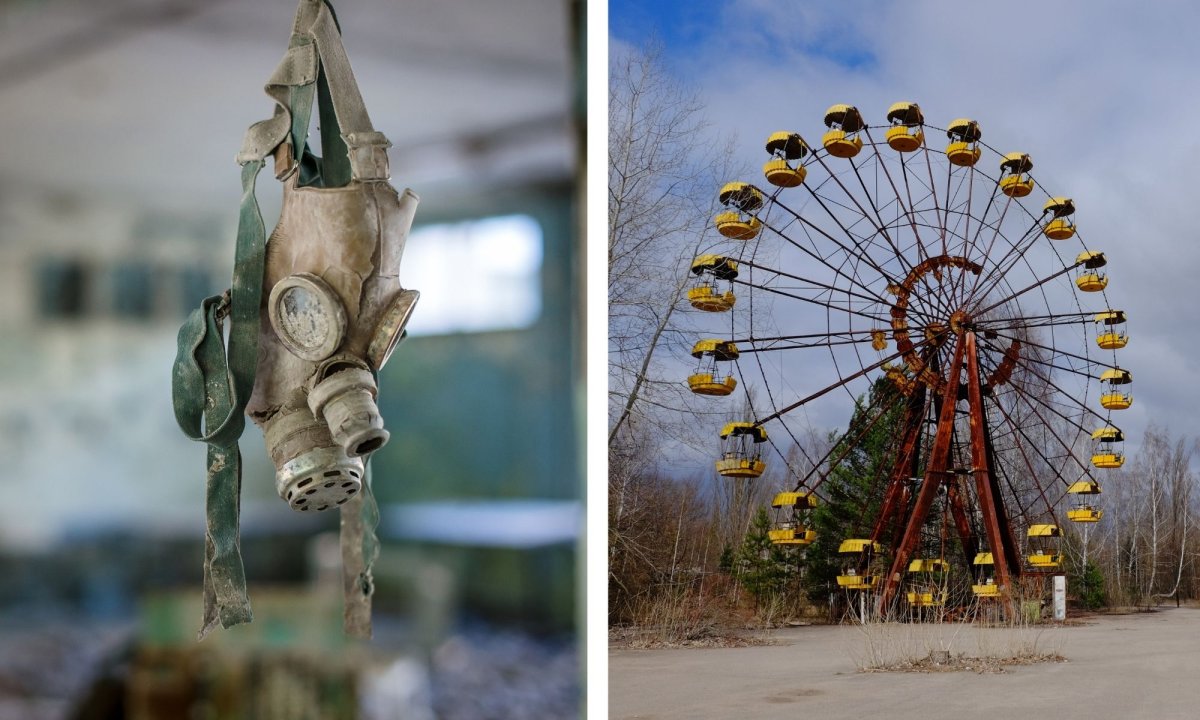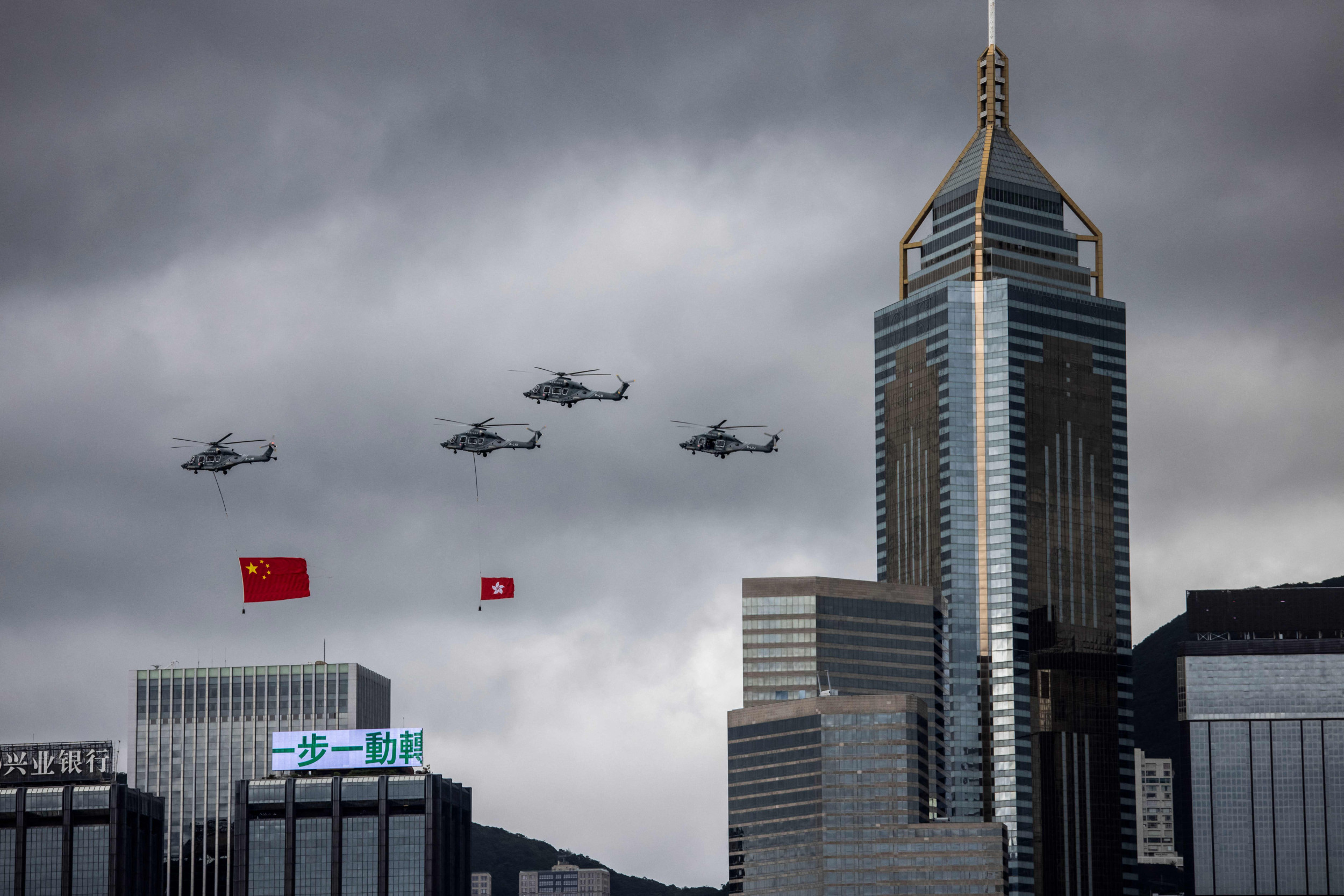Russian forces have taken control of the site of the world's worst, and most infamous, nuclear disaster, the Chernobyl power plant in northern Ukraine.
Russian forces stormed the plant on the first day of the country's invasion of Ukraine and are holding hostages, State Agency of Ukraine on Exclusion Zone Management spokesperson Yevgeniya Kuznetsovа, told CNN.
Ukrainian presidential adviser Mykhailo Podolyak said that control of the Chornobyl zone was seized by Russian forces after a "fierce battle," CNN reported. He said: "After a completely senseless Russian attack in this direction, it is impossible to say that Chernobyl is safe. This is one of the most serious threats to Europe today."
The site of the Chernobyl power plant sits in an exclusion zone with a near 19-mile radius, according to the International Atomic Energy Agency (IAEA). All reactors at the site are now closed, but some remained active as late as the year 2000. Radioactive isotopes still linger, albeit at tolerable levels for limited exposure times.
The IAEA says that the region of Chernobyl can now be visited, even the exclusion zone and some residents of the area have returned to their homes following the accident which took place in 1986.
What Happened at Chernobyl?
According to the United States Nuclear Regulatory Committee (U.S.NRC) on April 26, 1986, a sudden surge of power during a reactor systems test destroyed Unit 4 of the nuclear power station at Chernobyl.
The accident happened during a low-power test when safety measures were ignored and uranium fuel in the reactor overheated and melted through the protective barriers, the IAEA says.
The reactors lacked a containment structure—a concrete and steel dome over the reactor itself designed to seal radiation inside the plant in the event of such an accident. That meant, the IAEA says, that over 100 radioactive elements like plutonium, iodine, strontium, and cesium were scattered over a wide surrounding area and into the atmosphere.
Compounding the crisis was the fact that graphite blocks used as a moderating material in the reactor caught fire as air entered the reactor core, which increased the emission of radioactive materials into the environment.
Responding to the crisis, emergency crews used helicopters to pour sand and the element boron on the debris of Unit 4. The U.S.NRC says the purpose of the sand was to halt the fires, while the boron was used to prevent further nuclear reactions.
Boron halts nuclear reactions by "soaking up" free neutrons that kick-start the fission process by bombarding large atoms, causing them to split. Because neutrons are also a product of the reactions, their release can cause a runaway effect if not controlled.
What Were the Effects of Chernobyl?
The initial blast at Chernobyl killed two, and 28 members of the emergency and clean-up crews, known as the liquidators, died in the first three months following the blast.
The most harmful radioactive elements released by Chernobyl were iodine, strontium, and cesium which have half-lives of eight days, 29 years, and 30 years respectively, the IAEA says.
The isotopes Strontium-90 and Caesium-137 are still present in the area to this day. Iodine is linked to thyroid cancer, and strontium can lead to leukemia. The IAEA states that cesium is the element that traveled the farthest and lasts the longest, this element can affect the entire body, causing damage in particular to the liver and spleen.
The fallout from the blast stretched out for almost 60,000 square miles and resulted in the estimated evacuation of 200,000 people, including the entire population of the northern Ukrainian town Pripyat, still abandoned to this day.
The incident rate of thyroid cancers in children up to the age of 14 in the region around Chernobyl is still far higher than normal, likely because children's thyroid glands are particularly susceptible to picking up radioactive iodine.
What Is Chernobyl Like Today?
The U.S.NRC estimates that it took around 600,000 liquidators to clean up the Chernobyl site. The destroyed reactor was covered in concrete, building what was known as the "sarcophagus" completed around November 1986.
Only considered a temporary fix and blighted by concerns its structure may be compromised by radiation it was designed to contain, the sarcophagus was stabilized and then completely enclosed by a new safe shelter called the New Safe Confinement. Completed in 2019, this new structure is designed to last for around 100 years.
On December 15, 2000, the IAEA says that the last reactor in operation at the Chernobyl site was shut down, and decommissioning began, which consisted of the removal and disposal of fuel and wastes, decontamination of the plant and the area surrounding it, including any soil and water that may be radioactive.
There are three retired reactors to be decommissioned on site, and the project, conducted under the supervision of the Ukrainian government, is still underway and is expected to take several decades. The IAEA says that the fate of the fourth reactor where the 1986 blast happened is still undetermined.
In a press statement on Thursday, the IAEA expressed grave concern surrounding the situation in Ukraine and warned against any action that could put the country's nuclear facilities at risk.
Regarding the situation at Chernobyl specifically, the IAEA wrote: "Ukraine has informed the IAEA that 'unidentified armed forces' have taken control of all facilities of the State Specialized Enterprise Chornobyl NPP, located within the Exclusion Zone. The counterpart added that there had been no casualties nor destruction at the industrial site."
Rafael Mariano Grossi, director-general of the IAEA, said: "It is of vital importance that the safe and secure operations of the nuclear facilities in that zone should not be affected or disrupted in any way."

Uncommon Knowledge
Newsweek is committed to challenging conventional wisdom and finding connections in the search for common ground.
Newsweek is committed to challenging conventional wisdom and finding connections in the search for common ground.
About the writer
To read how Newsweek uses AI as a newsroom tool, Click here.






